The contrast between limestone and the blue sea can be found everywhere on the Maltese islands. All important buildings on Malta and Gozo are made of limestone. From Hagar Qim and the Mnaijdra Temple, which were built 5,000 years ago, to the magnificent palaces and churches in the capital Valletta, all buildings shine in light-colored sandstone, while the Mediterranean Sea is their deep blue backdrop. This contrast is particularly beautiful and bizarre on the salt pans of the two islands. There is evidence that the Romans carved salt pans into the limestone to extract the valuable salt from the sea. Salt was once a coveted commodity, at times even a means of payment and an important preservative. To this day, salt is extracted in the traditional way in the salt pans on the north coast of Gozo in the Bay of Xwejni and in the Darmanin salt pans on Malta.
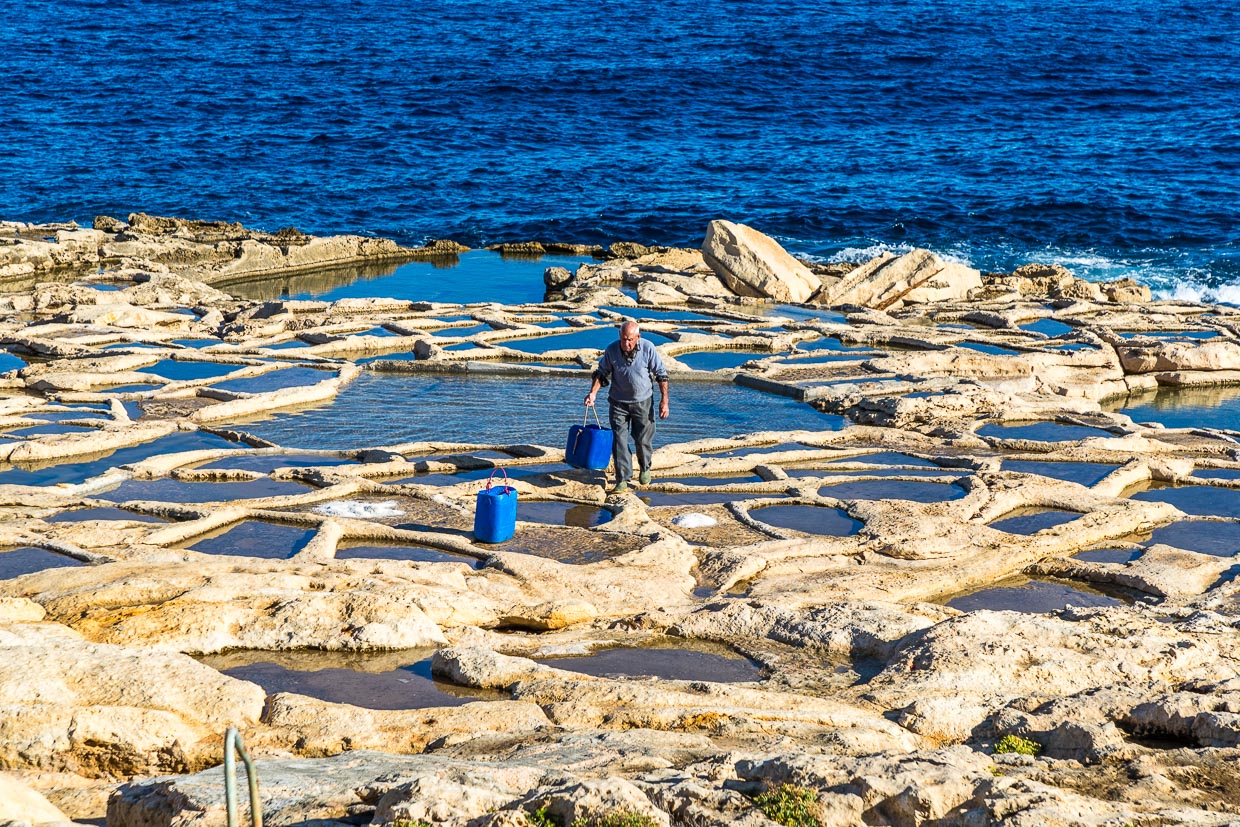
Tradition with problems for the next generation
The method of salt extraction has hardly changed for centuries. On the flat limestone coast of Gozo, the Romans and, from the mid-16th century, the Knights of the Order of Malta carved basins into the soft stone. Today, it is families such as the Cini family on Gozo and the Darmanin family on Malta who keep the tradition of salt harvesting alive. Their work is also open to tourists. In the summer months, you can watch the salt farmers at work. However, the business is no longer as lucrative as it was in the days of the knights. They had the salt pans strictly guarded and made secret salt extraction a punishable offense. Today, salt extraction is a sideline and the families who run it are happy if one of their children is still enthusiastic about the backbreaking job.
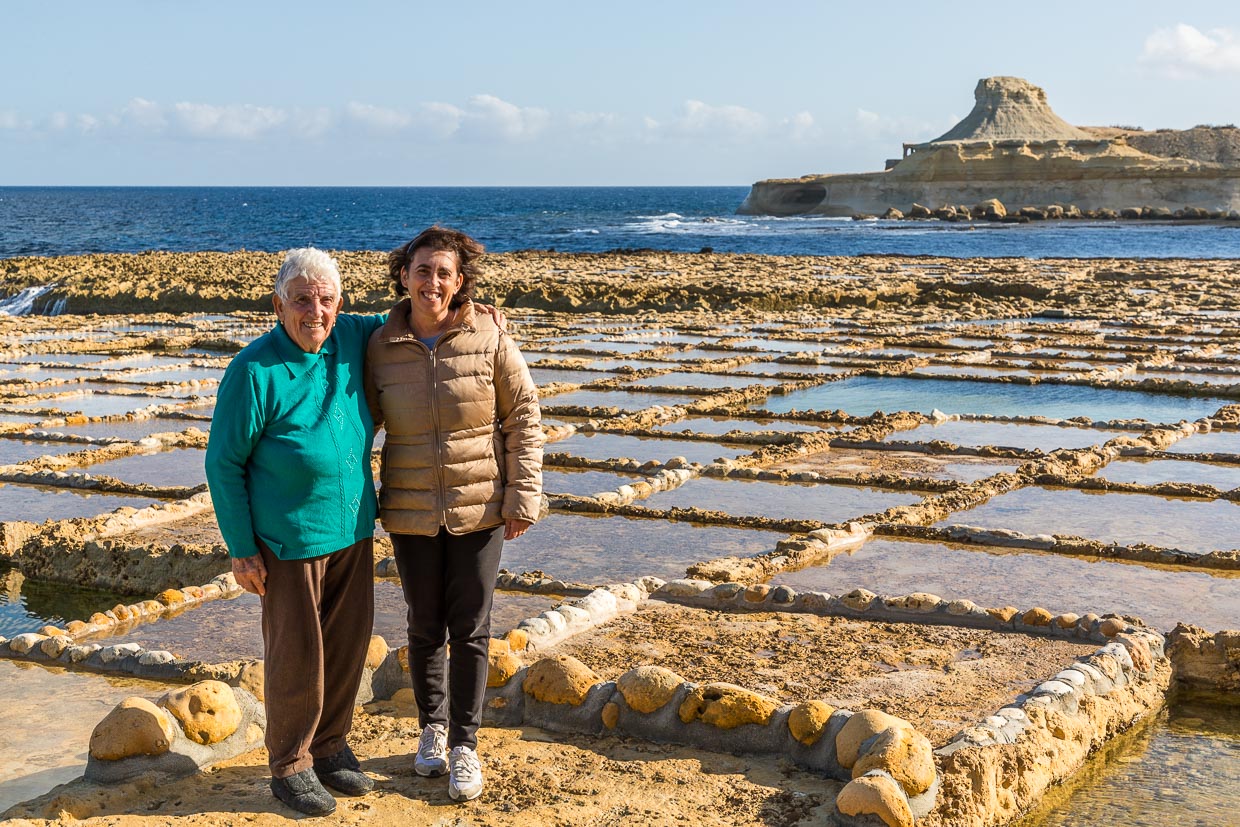
Sun, salt and tradition
The harvesting of sea salt on Gozo and Malta is traditional and purely manual work. Rose and Emanuel Cini’s family have been cultivating the salt pans since 1860, the fifth generation to do so. Rose Cini inherited the salt pans and her husband Mario became a salt farmer. Since the 1960s, the two have been looking after the idyllically situated salt pans in the bay of Xwejni. The Cini family owns around 300 salt pans, some of which are over 160 years old. The Darmanin family in Malta is the third generation to work on the salt pans in Marsaskala. Here, Żaren Darmanin, who is over 80 years old, still looks after the family’s salt pans. He is supported by his son Mario and his grandson Benjamin also gives guided tours. During the harvest season between May and September, you can watch the work on the salt pans on Gozo and Malta and also buy salt from the small local stores.
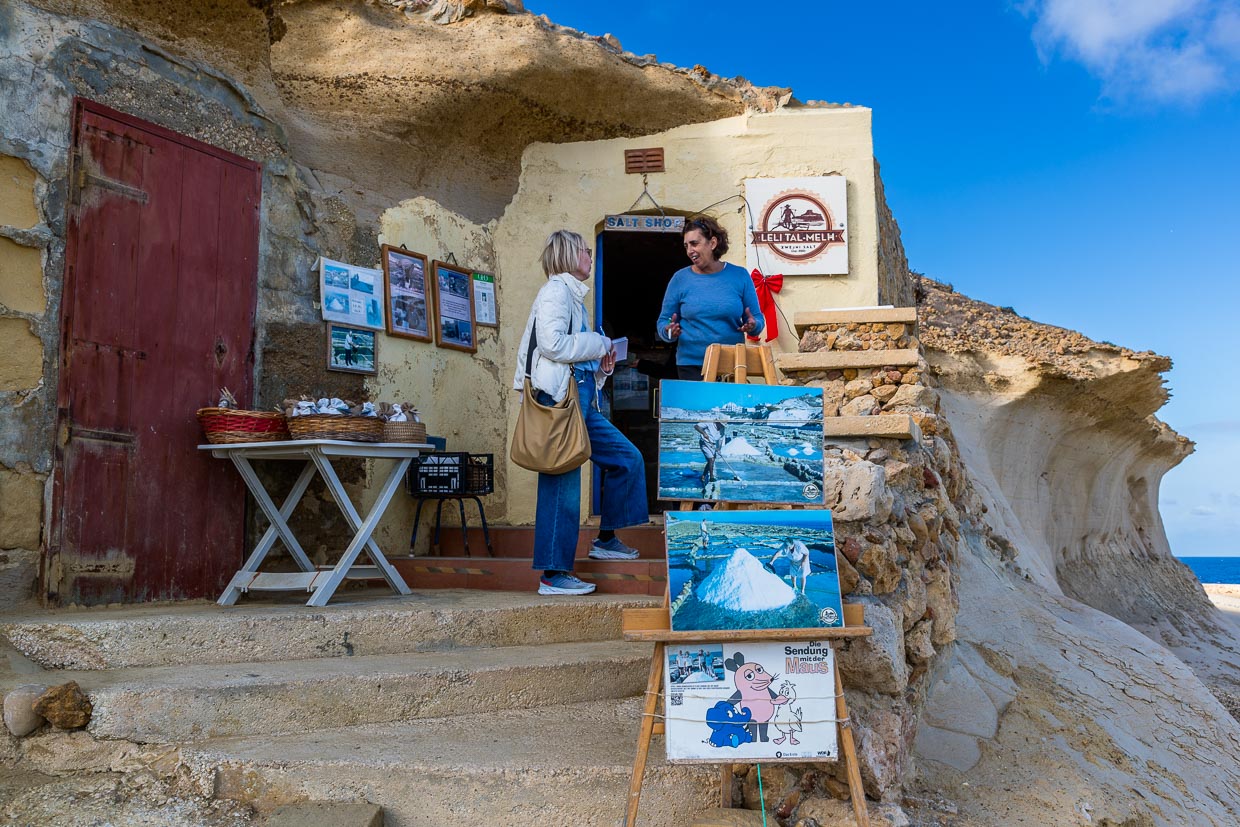
Salt needs sun
The weather plays a decisive role in salt harvesting. Above all, it needs sun to evaporate the water. When the sun burns hot from the sky and the wind blows from the right direction, the production conditions are optimal. The salt from Xwejni is harvested once a week. On stormy and rainy days, however, salt production is disrupted and no salt is extracted. If the wind blows in the wrong direction and carries the Saharan desert sand to the coast, this means a total loss for the Cini family. The sand contaminates the sea salt. Production is disrupted, with the salt slurry moving into shallower pools every eight days until the white salt crystals can be swept up at the end. When the desert sand settles on the salt pans, the basins have to be emptied, cleaned and filled with fresh seawater. The Cini family runs the seawater through a filter system beforehand. It takes weeks before the first sea salt can be piled up again to form snow-white cones.
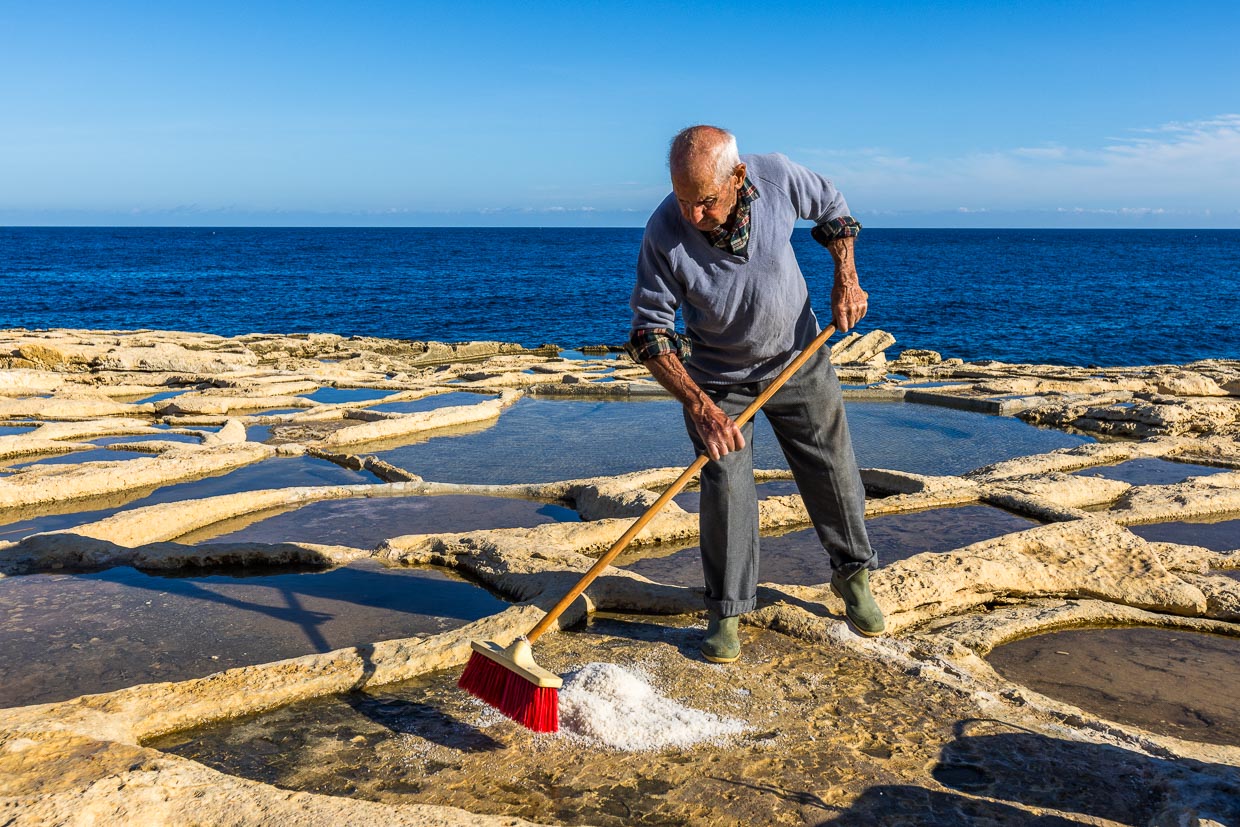
Sea salt from Gozo and Malta: natural and full of flavor.
The sun certainly shines just as hot on the Maltese islands as it did in the days of the Romans or knights. Even today, the extracted salt is swept together with brooms and transported in buckets to the higher storage rooms. The work is made easier by the use of a motorized pump. With its help, the water is filled from the larger salt pans into the smaller ones. The Mediterranean has a salt content of three percent. The water evaporates and after seven days the more concentrated seawater is pumped into shallower salt pans. The salt slurry remains there for another seven days. What remains is then swept into small salt cones and exposed to the Mediterranean sun for another few days. The salt does not undergo any further treatment. It is not boiled and no additives are added.
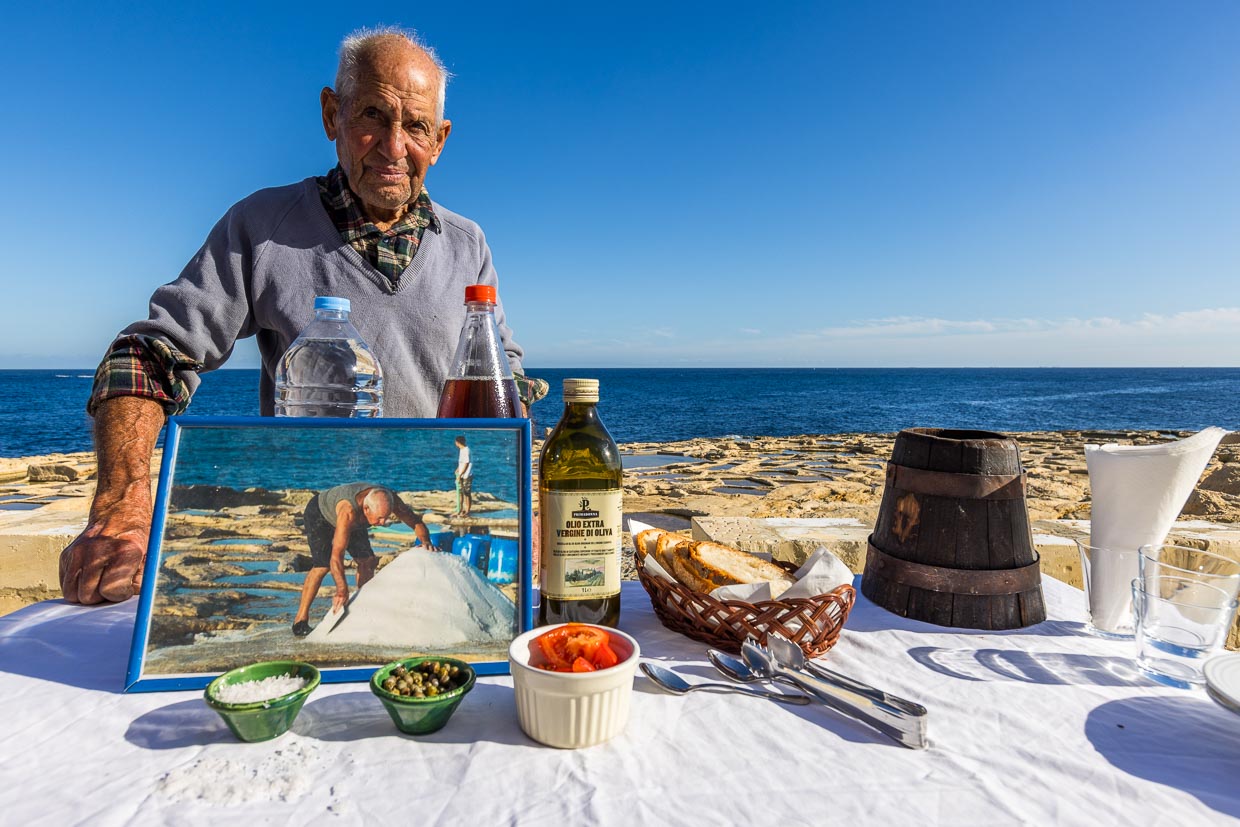
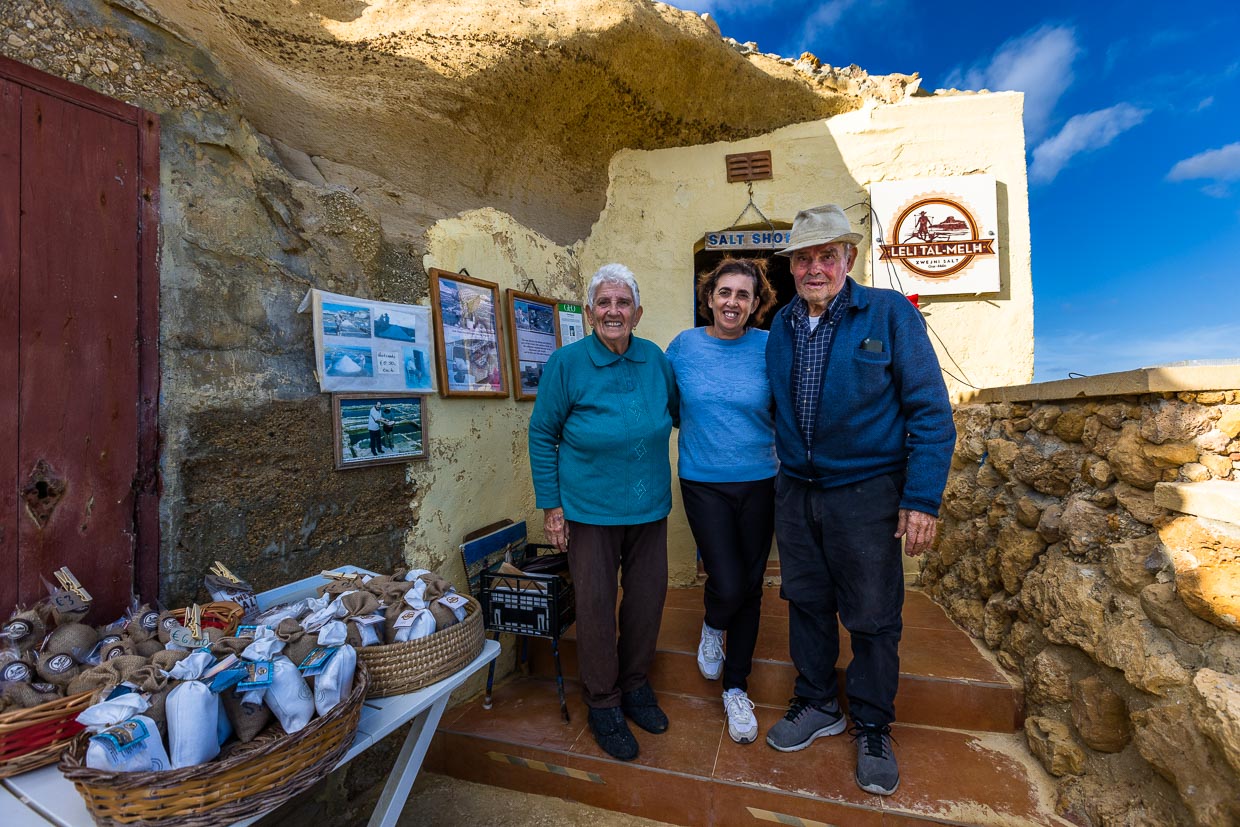
Not all salt is the same
The Maltese use their salt for many of their typical dishes. The capers harvested on Gozo and Malta are also preserved in sea salt. Natural salt contains a wide range of essential minerals and trace elements, such as potassium, magnesium, zinc and selenium. The salt from Gozo and Malta is particularly soft, easily soluble and contains magnesium. In contrast, these elements are extracted from commercially available table salt in industrial processes. What remains is table salt (NaCl / sodium chloride), which has an aggressive taste compared to sea salt. Sea salt is ideal for seasoning fish, meat and vegetables. It contains no artificial additives or anti-caking agents. Maltese sea salt has a fine taste and a crystal white color.
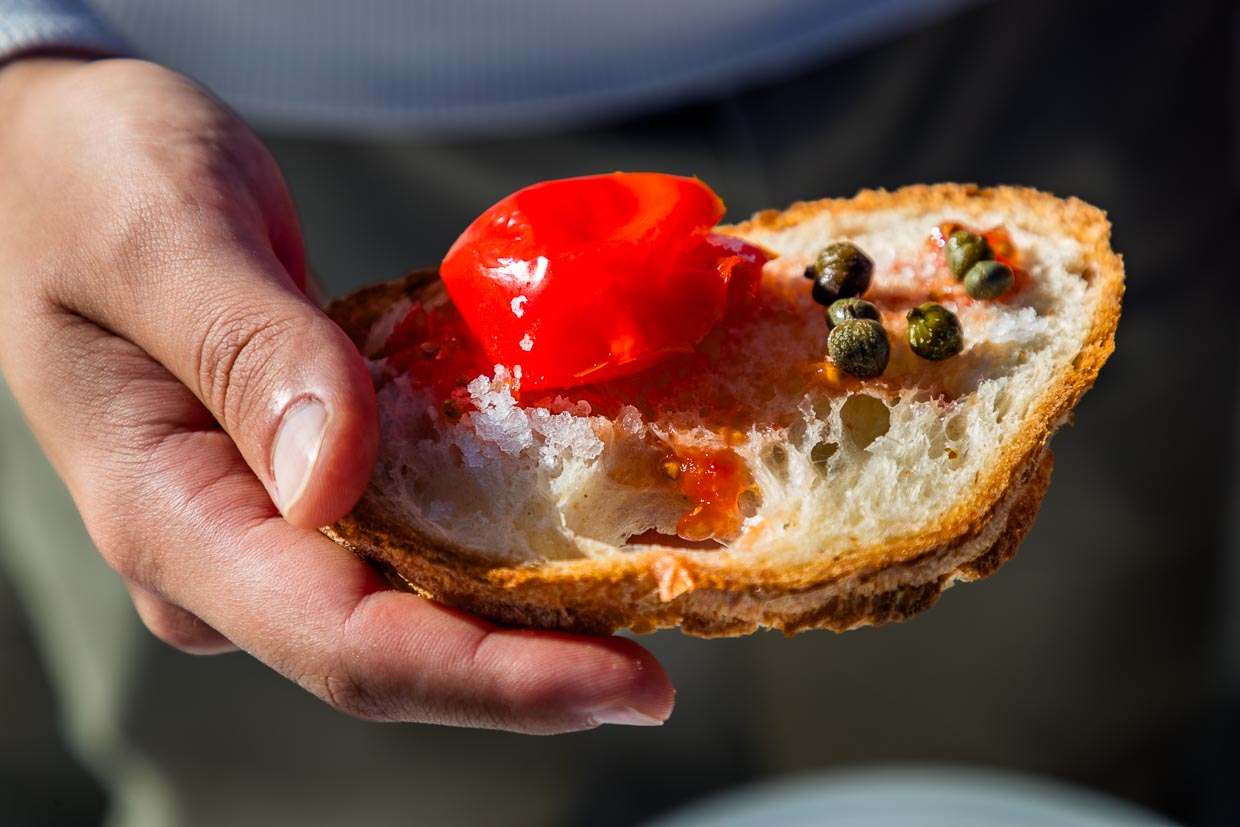
Travel tips Malta and Gozo
Maltese cuisine is characterized by the islands’ eventful history. Malta and Gozo were strategically located on important trade routes in the Mediterranean. Today’s cuisine is characterized by the tastes and preferences of different occupying powers as well as traditional Maltese dishes. In addition to sea salt, capers, olive oil and sun-dried tomatoes are among the Mediterranean delicacies. You should definitely also try the pastizzi dumplings baked in fat, the stuffed farmhouse bread ftira and the small round sheep’s milk cheese gbejna. The Merill Rural Network has been active on the islands for several years to preserve and promote traditional crafts and bring them closer to tourists. More information about the Cini family’s salt harvest on Gozo.
Christmas in Malta
In the run-up to Christmas, many streets and squares in Malta and Gozo sparkle. Angels, stars and often the three holy kings are positioned in every village. Magnificent fairy lights are strung across the streets and fountains and squares are decorated with figures. Santa Claus is rarely seen. Snowmen are a little more popular, even if the wish for a white Christmas will probably never come true in Malta. Click here for the picture gallery Lametta in Valletta and the report on the live nativity scene in Għajnsielem on Gozo.
The research trip was supported by VisitMalta and VisitGozo

